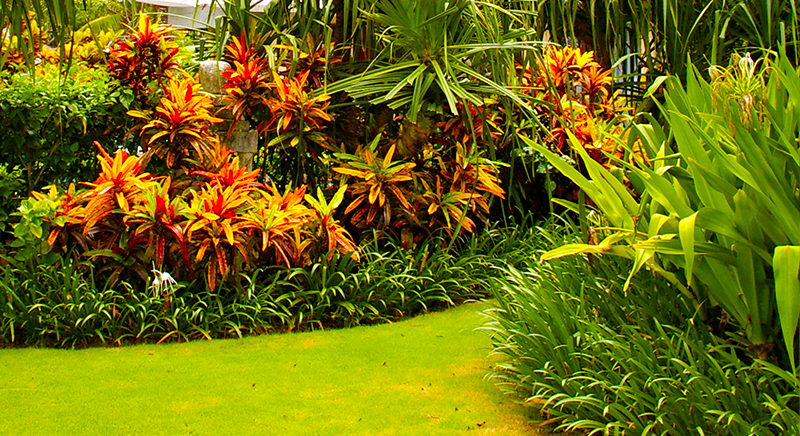
Commercial Landscaping Missteps Property Managers Should Avoid
Commercial landscaping often plays a pivotal role in tenant retention. The property manager’s job is becoming more challenging as you work to distinguish your commercial facility from your competitive set.
According to data released for 2023, the United States is home to an impressive 296,477 property management businesses. This growing sector, which draws in a staggering $99.5 billion annual revenue. As you work to set your property apart, we are here to help.
Steering clear of these eight frequent commercial landscaping mistakes is not merely a luxury but a strategic necessity for ensuring your property stands out and thrives. Effective commercial landscape management can enhance your facility’s curb appeal, help with CAM rates, promote sustainability, and create a welcoming environment, which is key to attracting and retaining tenants and clients.
8 Commercial Landscape Mistakes To Avoid
When it comes to commercial landscaping, a well-maintained and aesthetically pleasing exterior can make a lasting impression on clients, employees and visitors. However, achieving a beautiful landscape requires more than just planting a few trees and mowing the lawn. Here are eight common commercial landscaping mistakes to avoid to ensure your property always looks its best.
1. Ignoring Soil Quality
Healthy soil is the foundation of a thriving landscape. Creating an added challenge, Florida soil quality is unique and must be factored into the commercial landscaper’s plan to avoid poor plant growth and increased maintenance costs. The soil’s pH levels and nutrient content in South Florida can vary significantly based on the specific local region. As such, it is crucial to work with experienced landscapers who will understand the demands of the soils they work with.
2. Choosing the Wrong Plants
Selecting plants unsuited to Florida’s demanding climate and soil conditions can result in high maintenance, replacement costs, and an unappealing look. Therefore, it is best to opt for Florida native plants, as they will look their best in the natural environment and require less water and care.
Benefits of Choosing the Right Plants:
Native plants help commercial landscapers understand what animals and insects are attracted to them.
Confidence that the plants will be resilient in the (often) harsh South Florida weather conditions.
3. Overlooking Drainage
Drainage can be essential, especially in the rainy summer months in Florida. On the contrary, poor drainage can cause water to pool in certain areas, leading to plant diseases and root rot. Landscaping plans should ensure adequate drainage solutions to prevent water-related issues.
Additional Problems Overlooking Drainage Cause:
- Waterlogged soil
- Erosion and structural damage
- Standing water can drown plant roots and foster an environment for pests and diseases
- Compromise the stability of hardscape features, which can lead to costly repairs.
4. Neglecting Hardscape Features
Hardscape elements like walkways, patios, and retaining walls add structure, beauty and functionality to your landscape. Subsequently, ignoring their maintenance can lead to issues. This common commercial landscaping mistake can lead to many issues, such as erosion and safety hazards. Best practices should include regularly inspecting and repairing hardscape features to keep them in good condition.
6. Failing to Plan
A purposeful design in commercial landscaping is crucial for developing a functional and inviting outdoor space. From considering traffic flows to highlighting key areas to focusing on comfort and amenities, it is crucial to create a well-thought-out design. In other words, creating a holistic plan for the outdoor space is vital to leaving a lasting impression.
Tips for Strategically Planning A Commercial Landscape
- Take into account the flow of traffic, including pathways and parking lots.
- Highlight the main entrance with striking landscaping features that boost curb appeal and leave a lasting first impression.
- Implement comfort and amenities such as comfortable seating areas in shaded spots and relaxation or outdoor meeting spots.
Through thoughtful planning in every aspect of the landscape design, from the choice of plants to the placement of seating, commercial landscapers can craft environments that enhance visitors’ overall experience.
7. Underestimating the Importance of Curb Appeal
First impressions matter, and your landscape is often the first thing people see. For this reason, commercial landscapers should not underestimate curb appeal’s role in a property’s success.
Tips for Enhancing Curb Appeal:
- Colorful plant beds
- Neatly trimmed hedges
- Well-maintained lawns
- Designate focal points
- Use lighting to enhance
8. Forgetting Sustainability
Sustainable landscaping practices benefit the environment and can reduce maintenance costs. For this reason, it is important to incorporate elements like rain gardens, native plants, and composting to create an eco-friendly landscape that thrives with minimal intervention.
By avoiding these common mistakes, you can create a commercial landscape that is not only beautiful and inviting but also sustainable and easy to maintain. Remember, a well-planned and maintained landscape reflects positively on your business and can leave a lasting impression on everyone who visits your property.
Shinto Landscaping specializes in partnering with property management teams to accomplish their goals, such as:
- Landscape Enhancements
- Landscape Maintenance
- Landscape Installation
- Arbor Care
- Fertilization
- Irrigation
Shinto Landscaping is your partner in making your property look its best.

